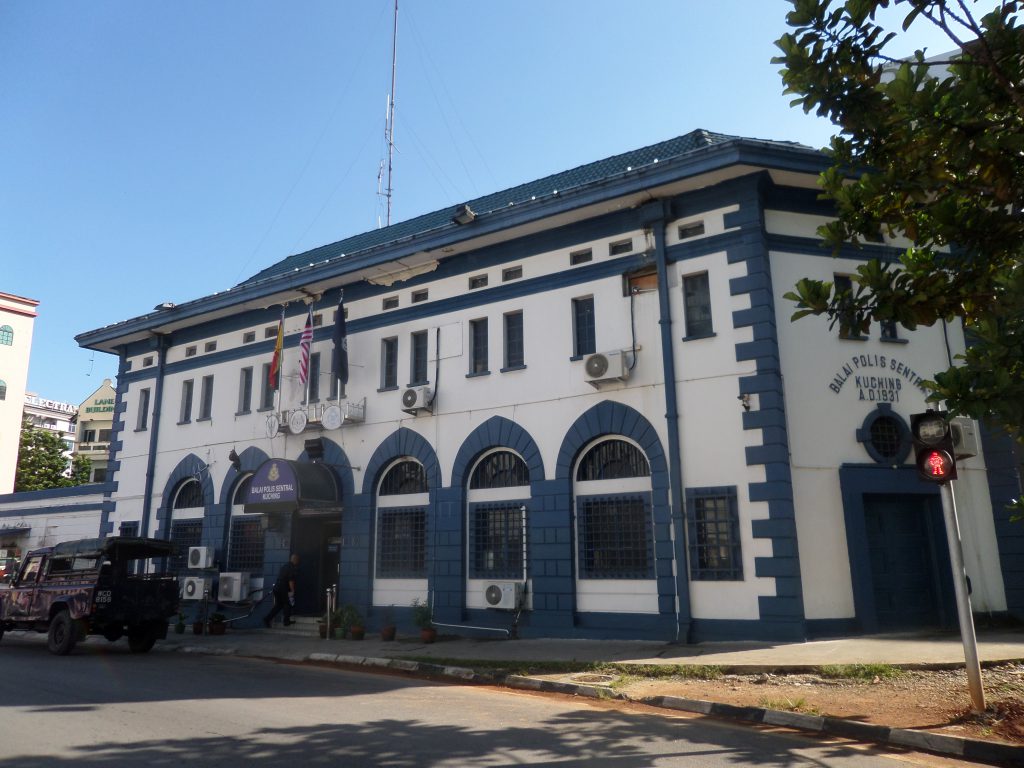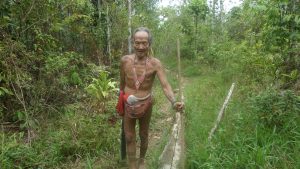Why visit Bukhara?


Bukhara (together with Samarkand) is one of the gems of Uzbekistan, so a trip to the country is not complete without it. When I was planning my trip, most of the sources I found online suggested 2 days for Bukhara, so I decided to spend 3 days in the city. But when I was leaving, I had the feeling that I could spend at least a few days more in this wonderful place – not only because of the historical sights, but also because I found the local people very warm and welcoming.
Two days will be enough if you only plan to have a quick look at some of the main sights and tick them off your list, but it will be a rush. Especially if you travel during the hot summer season, when temperatures can rise over 40 degrees Celsius (104 Fahrenheit), which will make you stay indoors for at least a few hours in the middle of the day.
How to get to Bukhara?
Few, if any, people start their Uzbekistan trip in Bukhara, although there are international flights too. It is much more likely that you are either coming from Samarkand or Khiva. In both cases. the train is the most common option for transportation. I took the fast train from Samarkand, leaving at 9:50 am and arriving at 11:23. I bought the ticket online before my trip on the official website https://chipta.railway.uz/en/home, and paid 99.000 sums. Extremely comfortable, fast and punctual.
There are also buses and minivans (marshrutkas), but they are much less comfortable and possibly slower, although less expensive too. Groups (and those not ravelling on a budget) may also consider hiring a taxi or a car with a driver, but I’m not sure how much it wold cost.
The Bukhara train station is actually outside of Bukhara. On the map, find Bukhara 1 in a town called Kogon. It is not very far from central Bukhara though, but you will need a taxi ride to your accommodation anyway. As always, be prepared to haggle hard. The taxi ride should cost less than 20.000 sums, but you may be lucky to be able to haggle it down to 40k. They will initially quote 90 or a hundred. If you can, download and set up the Yandex Go app, the local equivalent of Uber, and then you will have no problem at all.
Most famous sights in Bukhara
Labihovuz area
This place is very often mentioned as Lyabi/Labi “House”, and this was confusing for me at the preparation phase. There is no “house” in the name. “Hovuz” in the Persian language means “pool”, and the whole phrase is thus “by the pool”. And this is exactly what it is: a beautiful square with trees, cafés and restaurants by a pool. There is also an old madrasah on one side, and there are benches in a small park by the pool. It is especially popular in the evening, when lots of people enjoy a meal or a few drinks in one of the restaurants or cafés there.




Hovuzes were found all over old Bukhara, and people used to clean themselves and wash their clothes in these lakes. The water, however, was never changed, and this unavoidably meant disastrous infections spreading in the community like wildfire. Today, there are only a few of them left, Labihovuz being the most famous (but see also Bolo Hovuz below).
The area around Labihovuz is also the very heart of the historical city, full of old buildings, shops and bazaars. In summer, it becomes lively and full of people after sunset, but tourists will inevitably pass through this area several times whichever sight they are planning to visit. Some of the restaurants also have topchans, and there is a topchan even on the pavement for anyone to enjoy.
The Jewish quarter and the streets of Old Bukhara
To the south of Labihovuz, you will find the Jewish quarter wit two synagogues. They are not always open, so if you want to make sure you can visit, call ahead. I visited twice, and on one occasion, I found the synagogue open, and had a nice conversation (in Russian) with an elderly gentleman. He said there are only 150 Jews left in Bukhara, compared to the 25.000 a few decades ago. “I don’t see why they are leaving,” said Mr Gulyamov, “Bukhara people are nice to everyone. If you ask for directions, not only will they show you the way, but they will walk you to your destination,” he said. And I do understand what he meant. I can confirm: Bukhara people are friendly, helpful and welcoming to everyone.
If you have time, you must walk around in the old quarter’s narrow streets to the south of Labi Hovuz. Most of these streets are not even marked on online maps, but they look gorgeous, and you feel you have been thrown back in time at least a few hundred years. Look at the doors and windows, some of them look amazing, even if some houses look rather run-down.













Ulugbek and Abdulaziz Khan madrasahs
Khakikat street leads you from the Labihovuz area up north to further famous sights in Bukhara, through a small walk-through bazaar. At the end of the street, turn right, and you will see two majestic looking madrasahs: Ulugbek madrasah on the left, and Abdulaziz Khan madrasah on the right. The former was built in 1417, so it is one of the oldest buildings in Central Asia. Abdulaziz Khan madrasah (b 1651) also looks wonderful even if it is not heavily restored like other buildings in the city. There are shops and a craft centre inside it, but do go inside, it looks great!


Po-i-Kalyan complex
A short walk from the Ulugbek and Abdulaziz Khan madrasahs, and on the way to the Ark of Bukhara (see below), you will see a square called the Po-i-Kalyan complex.
The Kalyan Minaret, or Minorai Kalon in the local language, is one of the most prominent buildings in Bukhara. Even Genghis Khan found it to be so strikingly beautiful, that he spared it – although he destroyed everything else in the city. The minaret was built in 1127, and reconstructed several times during the centuries.
The Mir-i-Arab Madrasah on the right was built in 1535, while the Kalan Mosque on the right was built in 1515. I wasn’t allowed to enter the Kalan Mosque (you can enter the hall only), but the view from its entrance over the square is magnificent.
Return to the square in the evening to enjoy the beauty of the buildings in the golden light of the setting sun.

The Ark of Bukhara
From the Po-i-Kalyan complex, it is only a few minutes walk to Bukhara’s most famous landmark, the Ark of Bukhara. It is a fortress dating back to the 5th century AD, and it actually served as one as late as the 20th century, when the Soviets occupied it in 1920. It is worth visiting it under different light conditions if you can. You can also enter the fortress (25.000 sums) to see some moderately interesting museums, but the real beauty of it, I think, is the walls, which you can admire only from the outside.


Bolo Hovuz
You only have to cross the street in front of the Ark to reach a nice little park area with another pool: the Bolo hovuz. The park is a wonderful spot for a little rest, while enjoying the sight of the building across the pond: the Bolo Hovuz Mosque (sometimes spelled Bolo Haouz Mosque). It was built in the early 18th century, but the painted wooden columns were added later, in the 20th century. You will get the best view from under the columns, so get close.
When I was there, there was a guy working on some crafts in front of the mosque, with whom I had a nice little conversation.



Chor Minor
Chor Minor is a smallish building with four beautiful towers. Some sources say it actually served as the gate to a madrasah, now demolished, others say that the building was constructed in its own right, although it really was part of the madrasah. In any case, it looks so pretty that no visitor to Bukhara should (or does) miss it, especially that it is just a short walk from Lyabi Hovuz.

Samonidz park
Right next to the Ark and Bolo Hovuz, there is a small recreation park with benches to have a rest, with a few small restaurants and food stalls, and a 9th century building, the Samonid Mausoleum. It is a tiny building, and there is little to see inside (entrance 5000), but nice to look at from the outside.

Accommodation options
Bukhara, like the other historical cities in Uzbekistan, has a wide range of guesthouses and small family run hotels to choose from, along with a few larger hotels. If you are like me, and prefer small guesthouses, I recommend the ones near Lyabi Hovuz, just to be un the middle of the action. You won’t have to walk too much even if you choose a hotel or a guesthouse a little further away, though – Bukhara’s sights are walking distance from each other.
I stayed at one of the oldest and most famous places called Sasha and Son. Even my taxi driver said “of course, I know where it is, it is one of the first guesthouses in town”. Rooms are gorgeously decorated, a double cost me 30 dollars, and they let me check out at 11pm for a half a day’s fee. The staff speak excellent English, and they will help you with whatever questions you might have.


Food and drink
Central Bukhara has very good dining options (although not comparable to that of Tashkent). There are a lot of restaurants near the Lyabi Hovuz, but some of them are better than others. I have tried Chalet, a nice restaurant with a garden and air-conditioning inside, with very reasonable prices and good food. For some reason, most restaurants I have tried have run out of some of the menu items though, so you should prepare for this. Chalet’s plov is fine (but for the best plov, you will have to try some Tashkent restaurants, I’m afraid).
Another place I tried is Eco Terrace near Abdulazis Khan Madrasah. Prices are reasonable, too, and the food was fine (try the soups).
If you want to try something really local, I recommend Shohrud, not far from Lyabi Hovuz. It is frequented by local people, and the food is excellent (and priced according to local people’s budget). they do speak some basic English, and they are very nice and helpful, so you will have no problem ordering your meal.
A nice (and more expensive) café I liked is the Halva Café, with an excellent view over a nice square. They do serve food too, but I only had an espresso in the afternoon there. Espresso costs a fortune everywhere in Uzbekistan, and is invariably terrible. If you are as much of a coffee maniac as I am, I suggest you order a simple black coffee rather than an espresso – it will be much better, and will cost a tenth of the price of an espresso.





